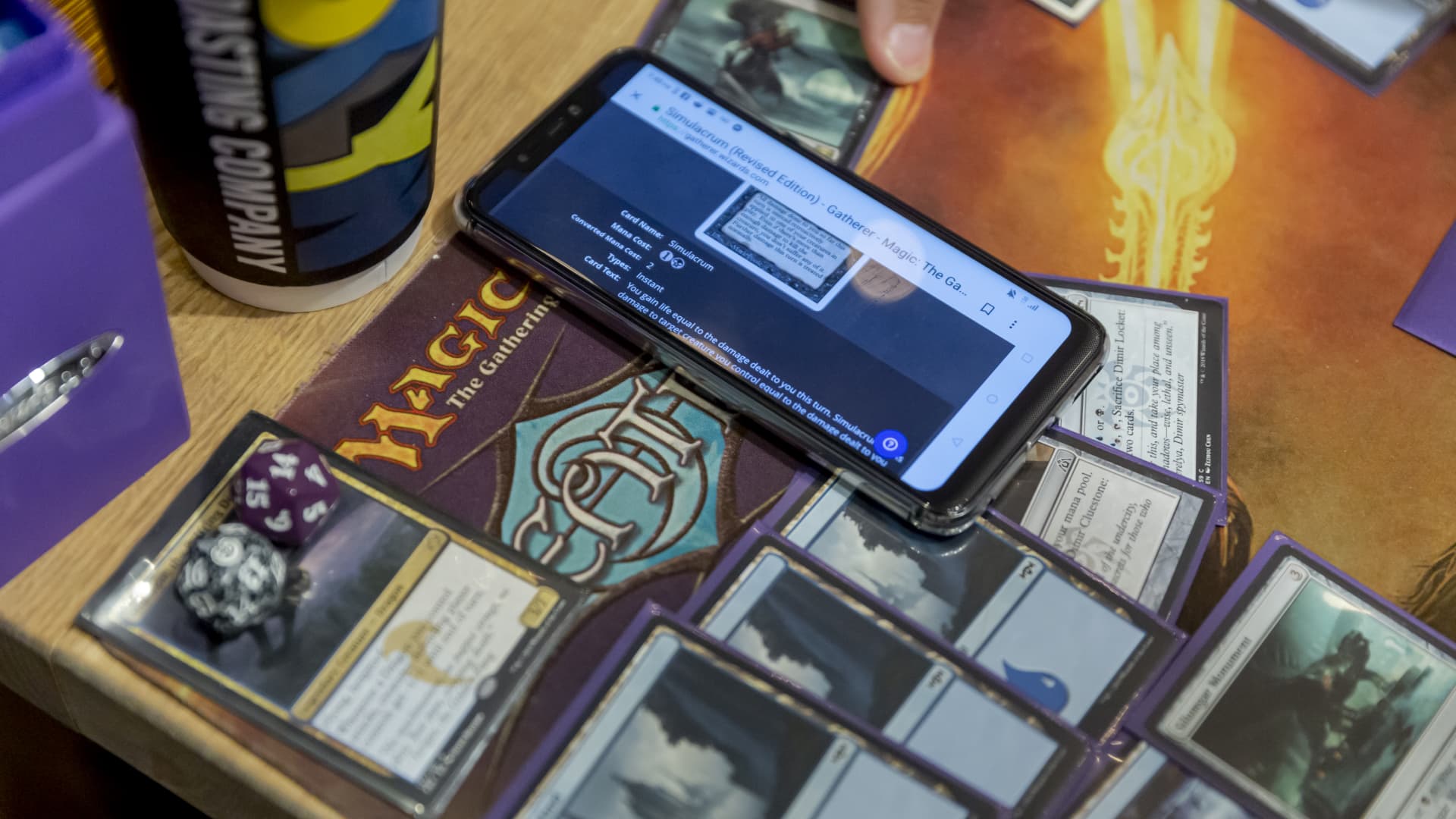Hasbro is defending its strategy for its popular Magic: The Gathering game.
In a talk hosted by UBS on Thursday, the toy company refuted criticism that it is printing too many card sets for the soon-to-be billion-dollar brand.
The comments come nearly a month after Bank of America downgraded Hasbro to underperform from buy, saying the company was “killing its golden goose” and could see a 34% decline in share price due to its mishandling of the Wizards of the Coast unit that houses Magic.
Jason Haas, who wrote the Bank of America report, said players are getting increasingly turned off by a slew of new releases that flooded the market and decreased the secondary market values of cards.
At the talk Thursday, Cynthia Williams, president of the Wizards of the Coast unit, said Hasbro doesn’t have any indications of broad declines in interest in the game’s products.
“There is no evidence that Magic is overprinted,” she said.
Williams said the company typically spreads out its tentpole releases of Magic: The Gathering card sets in two-month intervals. But in October, she said supply chain issues resulted in two sets releasing at the same time.
She said that the cadence of releases will return to normal in 2023, with major sets being released every two months and micro sets sprinkled in between.
In the game, which can be played in person or online, players use cards to cast spells, use artifacts and summon creatures to defeat their opponents. Rare and powerful cards can gain value on secondary markets as players seek to bolster their decks for tournament play or personal collections.
As for secondary market pricing concerns, Williams noted that Hasbro doesn’t derive money from card resales and that if prices for recently released products rise significantly, it means “we’re not adequately meeting customer demand and we are making millions of players unhappy at their lack of ability to acquire the cards they want to play.”
She said Hasbro prints and reprints cards based on demand both during presales and once the product has been released.
“Like any market for any other collectible products, some products and individual cards do become more collectible than others and values can change over time due to a multitude of external factors, many entirely unrelated to the number of cards,” she said.
Hasbro CEO Chris Cocks, who was present at the talk, also addressed concerns over potential price increases, as the toy industry braces for inflationary pressures.
Cocks said the company took pricing action on about half of the Magic line — something Hasbro has not done in 10 years — predominantly because paper costs have risen significantly and demand for printing presses within the trading card market has grown.
But Cocks said that he doesn’t think raising prices on Magic cards is the answer to expanding the business over the long term.
“At the end of the day it’s about growing our player base,” he said.
Hasbro’s most engaged Magic players are those who play both online and in-person at local game shops or with friends. Williams said the company is seeing most of its new players coming from the online community to local hobby stores to buy physical cards.
She added that product expansions, such as cards based on popular franchises such as Lord of the Rings and Doctor Who, can help it tap into fan bases outside the realm of Magic.
